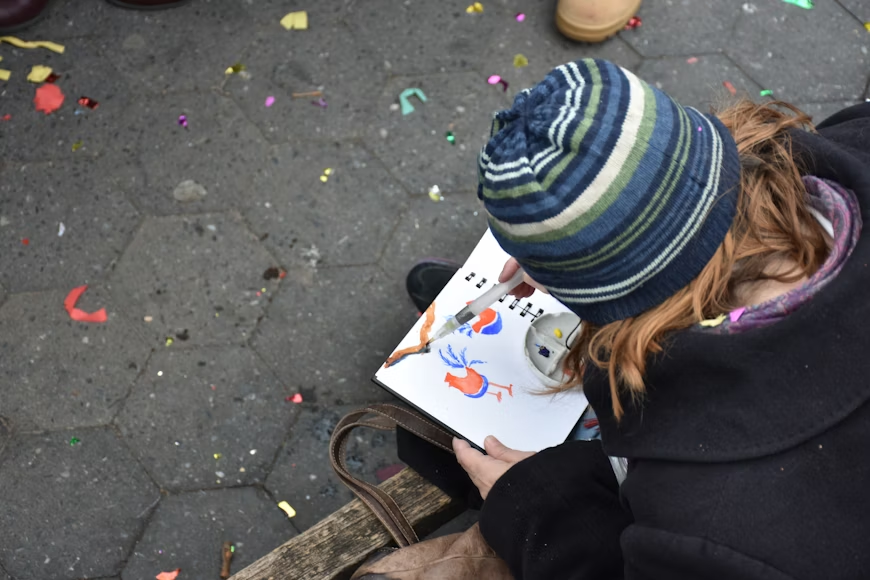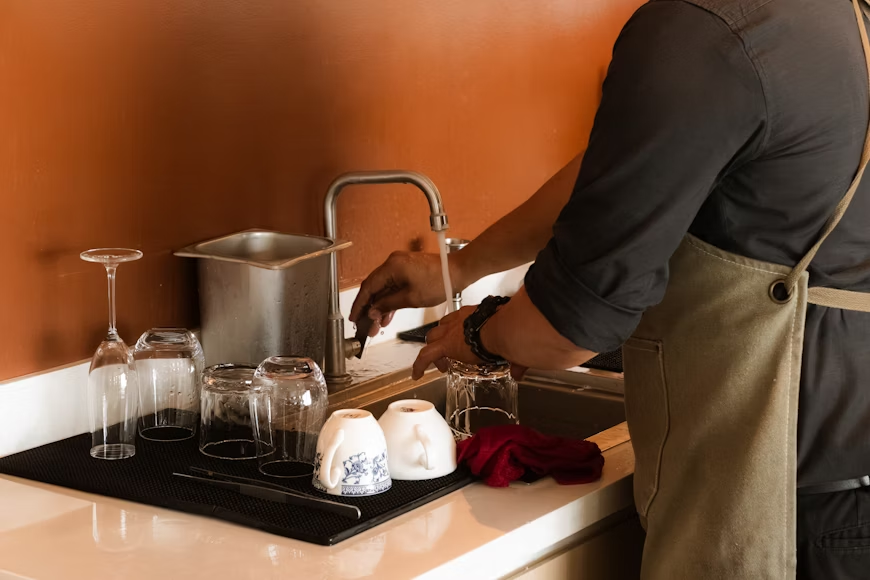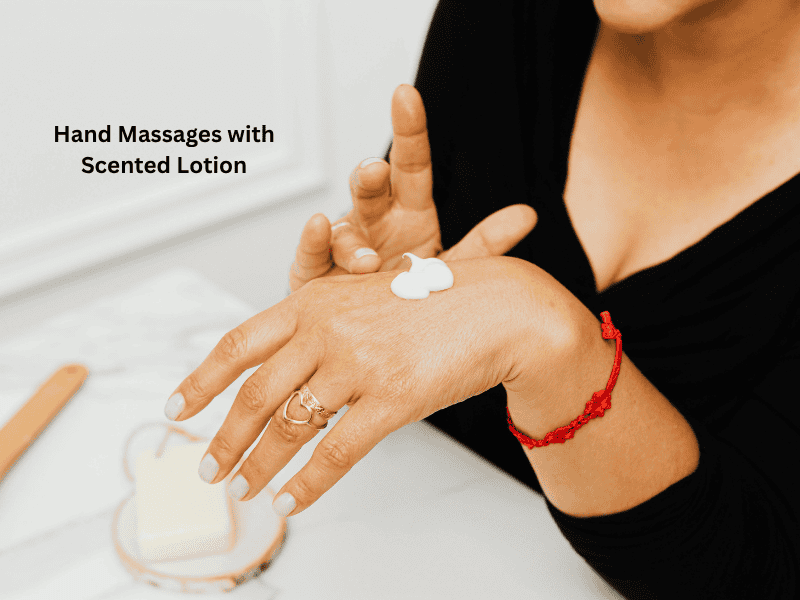Caring for a woman with dementia—whether she is your mother, grandmother, or a dear friend- can be an emotional journey filled with both challenges and beautiful moments. One of the most heartwarming ways to connect is Hobbies for Women With Dementia that bring calm, spark joy, or evoke beloved memories from her past.
I remember how my aunt would light up when we sat down to fold laundry together; something so simple became our quiet time to reconnect.
This comprehensive list shares 30 Hobbies for Women With Dementia that feel personal, purposeful, and uplifting, no matter what stage of the journey you’re on. These activities aren’t just time-fillers; they’re meaningful opportunities to support memory, reduce anxiety, and improve emotional well-being.
Remember, the goal is not perfection—it’s connection. Every woman’s journey with dementia is unique, so keep activities flexible and pressure-free. What matters most is the time you spend together and the gentle joy these moments can bring.
Creative Hobbies for Women With Dementia That Spark Joy
Finger Painting with Bright Colors

Let creativity flow freely without rules or expectations. Finger painting allows for pure self-expression and can be deeply satisfying for women who may struggle with fine motor skills.
Pro Tip: Use washable paints and large paper rolls for less mess. Set up near a sink for easy cleanup, and don’t worry about the final product; focus on the process.
Clay or Play-Dough Creations

Tactile activities like working with clay provide sensory inspiration while helping maintain hand mobility. The soft, malleable texture can be incredibly soothing.
One daughter shared how shaping flowers with her mom became their peaceful evening ritual. We would sit at the kitchen table, and even when words became difficult, we could still create something beautiful together.
Adult Coloring Books

Explore your creativity with colors. Simple, repetitive patterns in coloring books are both calming and satisfying. Choose books with larger designs and bold outlines that are easier to see and fill in.
Making Simple Bead Bracelets

This activity combines focus with beauty, creating something she can wear and show off. Use big, easy-to-thread beads to make the process manageable and enjoyable.
Linda, a caregiver from Florida, shared how her grandmother loved picking out colors for each bracelet. We’d sit by the window, and she’d hum while choosing the beads. It became our little afternoon tradition—and she always wore her favorite one the next day.
Painting Flower Pots
Let her decorate small pots for the garden or windowsill. This activity connects to nurturing a hunch and creates something functional for the home.
Seasonal Crafts
Create fall leaves collages, paper snowflakes, or spring flower arrangements. Tying activities to the current season helps trigger familiar feelings and maintains the connection to the world around her. These creative, seasonal crafts are wonderful hobbies for women with dementia, offering both sensory engagement and emotional comfort.
Memory & Reminiscence Activities
Looking Through Family Photo Albums

Photo albums often spark memories and conversation, even when other topics become difficult. The visual cues can unlock stories and emotions from years past.
Pro Tip: Laminate a few special photos for easy handling. This prevents damage while allowing her to touch and hold meaningful images.
Watching Classic Movies and Shows

Choose her favorites from the past, like “I Love Lucy,” Gone With the Wind,” or classic musicals. These familiar stories can provide comfort and may trigger happy memories.
Last winter, my mom and I started a little tradition: every Sunday night, we’d cozy up with popcorn and rewatch old classics like “Breakfast at Tiffany’s” and “The Golden Girls.” It reminded her of her youth in the ’70s and gave us a sweet way to reconnect, laugh, and even tear up together.
Listening to Music from Her Era
Frank Sinatra, Aretha Franklin, big band music, or old folk tunes often work wonders. Music has a unique ability to reach people with dementia, sometimes sparking singing or movement.
Storytelling Time
Even if she just listens, storytelling can be deeply meaningful. Share funny family stories, romantic tales, or memories from her younger years. She may smile or respond in small but significant ways.
Creating Scrapbooks with Magazine Cutouts
Let her glue and arrange pieces herself. This activity combines creativity with nostalgia as she chooses images that appeal to her.
Browsing Old Cookbooks
Even if she doesn’t cook anymore, flipping through familiar recipe pages can bring back memories of family meals and holiday traditions.
My aunt found her mother’s 1960s Betty Crocker cookbook tucked away in a storage box. As she flipped through the stained pages, she found handwritten notes in the margins, little tweaks her mom made to their Thanksgiving stuffing. She did not cook anything that day, but just holding that book felt like having a quiet conversation with her mom again.
Simple Daily Hobbies for Women With Dementia
Folding Laundry Together

If you are a woman, you are interested in this hobby. This repetitive motion is naturally calming and evokes memories of past routines. The familiar feel of the fabric and the satisfaction of completing a task can be deeply comforting.
Organizing Buttons or Beads by Color
Perfect for women who enjoy sewing or crafts. The sorting action is soothing, and the colorful materials provide visual stimulation.
Wiping Down Kitchen Surfaces

A low-effort chore that gives a sense of contribution to the household. The familiar motion and feeling of being helpful can boost mood and self-worth.
Arranging Silk Flowers in a Vase

This activity brightens the room while creating visual delight. Silk flowers are perfect because they’re safe, long-lasting, and require no special care.
Matching Socks from a Laundry Basket
Even something seemingly simple can feel rewarding. The matching action exercises cognitive function while providing a sense of accomplishment.
Games & Puzzles for Light Brain Stimulation
Large-Piece Puzzles
Focus on bold, clear images like flowers, animals, or familiar landmarks. Large pieces are easier to handle and less frustrating than traditional jigsaw puzzles.
Simple Card Sorting
Just sorting by hearts, spades, diamonds, and clubs, no complex rules needed. The familiar cards may trigger memories of past card games with family and friends.
Domino Matching
Skip the full game and just match colors or numbers. The satisfying click of dominoes and the visual patterns can be engaging and calming.
Guess the Song
Play snippets of old music and see if she can identify the tune. You may be surprised by how many songs she remembers, even when other memories have faded.
Remote-Control Plush Pets
These interactive toys are wonderful for women who miss having pets but can’t care for real animals. They respond to touch and voice, providing companionship without responsibility.
Nature & Sensory-Rich Activities
Watering Plants

If you are a nature lover, you love this hobby. Even small potted plants can bring joy. The act of nurturing living things connects to deep caregiving instincts and provides a sense of purpose.
Smelling Herbs and Flowers

Scents like lavender, mint, or roses can be deeply nostalgic. The sense of smell often remains strong in dementia patients and can trigger powerful memories.
Hand Massages with Scented Lotion

This simple act soothes both physically and emotionally. The gentle touch and pleasant scents create a calming, nurturing experience.
Sorting Textured Fabrics
From soft velvet to rough denim, it’s all about the tactile experience. Create a basket of different fabric squares for her to explore and sort.
Digging in a Raised Garden Bed
Safe and satisfying for those who love gardening. The feel of soil and the sight of growing plants can be deeply therapeutic. Raised beds are easier on the back and knees, making them perfect for older women. Watching flowers bloom or vegetables grow brings a quiet sense of accomplishment and joy.
Last spring, my neighbor Lucy, who’s in her 50s, planted cherry tomatoes, basil, and marigolds in her raised garden bed. Every morning, she’d step out with her coffee, check on the sprouts, and smile like she’d found a little peace. Gardening became her daily moment of calm.
Technology That Connects
Virtual Nature Tours
YouTube and live webcams offer access to zoos, ocean reefs, and national parks. These virtual experiences can be captivating and provide topics for conversation.
Google Earth Nostalgia Tours
Visit the street where she grew up, her childhood school, or places she once loved. This technology can make distant memories feel immediate and real.
Video Messages from Family Members
Short, sweet recordings from loved ones can be replayed whenever she needs comfort. Seeing familiar faces and hearing loving words can brighten difficult days.
Tips for Making Hobbies Dementia-Friendly
Making activities successful requires understanding and patience. Here are key strategies:
Keep instructions short and simple. Break activities into small steps and provide gentle guidance without overwhelming her.
Focus on feelings, not outcomes. The goal is connection and joy, not creating perfect crafts or solving puzzles correctly. Last week, my aunt and I colored a mandala page together. Her shapes were outside the lines, but we laughed, chatted, and enjoyed the moment — that joy mattered more than the final picture.
Stop if there’s frustration. If an activity becomes stressful, take a break and try again later. Flexibility is key to maintaining positive experiences.
Use soft lighting and reduce noise. Overstimulation can cause anxiety and confusion. Create a calm environment that supports focus and relaxation.
Follow her lead. Some days she may be more engaged than others. Pay attention to her mood and energy levels, and adjust activities accordingly.
Celebrate small victories. Acknowledge every success, no matter how small. A smile, a laugh, or a moment of recognition are all meaningful achievements.
Making Every Moment Count
The journey of caring for a woman with dementia is filled with challenges, but it’s also filled with opportunities for connection and love. These 30 hobbies for women with dementia offer pathways to meaningful moments that can brighten both your days.
Remember that the most important ingredient isn’t the perfect activity; it’s your presence, patience, and love. Every gentle touch, every shared laugh, and every moment of connection matters more than you might realize.
Start with one or two activities that feel right for your situation. Pay attention to what brings her joy and peace, and don’t be afraid to adapt activities to meet her changing needs. The goal is to create moments of comfort, connection, and happiness that honor who she is and who she’s always been.
Discover Your Personal Calm
Don’t let your needs get lost in a busy schedule. Use this tool to plan your self-care time and bring a little calm back into your day.
Frequently Asked Questions
You can use fabrics with zippers, buttons, soft fur, or Velcro patches stitched into a lap blanket. Each texture gives her something interesting to touch and play with. Add different materials like satin ribbons, corduroy strips, or fake fur patches for variety.
Websites like Etsy, Amazon, or elder care stores offer ready-made kits with puzzles, textured mats, and memory games made specifically for dementia care. Look for products labeled “dementia-friendly” or “cognitive stimulation.
Yes—many caregivers report that fidget blankets soothe anxious hands and help their loved ones stay calm. The different textures and interactive elements provide gentle stimulation that can reduce agitation.
Absolutely. Even enjoyable activities can be tiring. Watch for signs of frustration, fatigue, or overstimulation, and give breaks when needed. Short, gentle activities are often more successful than lengthy ones.
Yes, with appropriate support. Even simple experiences like holding a warm cup, listening to familiar songs, or stroking soft fabric can bring comfort and joy. Focus on sensory experiences rather than complex activities.

